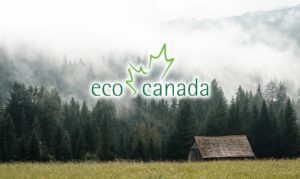Post by Kyle Paddon, C.Tech, EP

The long-awaited BC Water Sustainability Act (WSA) was brought into force on February 29, 2016. The goal of the Act is to provide the province with a better means of protecting, managing and using the province’s water.
For the first time ever in BC, groundwater (along with surface water) will be regulated by the province.
Key changes introduced by the WSA include:
- Licensing of groundwater for non-domestic use (greater than 250L/day)
- New fees and rentals for water use
- Stronger protection for aquatic ecosystems
- Expanding protection of groundwater related to well construction and maintenance
- Increasing dam safety and awareness
The WSA replaces the previous Water Act. There are five new regulations that have come into force under the Act, including regulations related to groundwater use and licensing, dam safety, and compliance. In addition, the Groundwater Protection Regulation, which previously resided under the Water Act, has been updated to provide enhanced provisions for well construction, maintenance and closure.

A summary of the new regulations that came into force under the WSA on February 29, 2016 are:
- Water Sustainability Regulation – addresses licensing, diversion and use of water; changes in and about a stream; short-term diversion of water for drilling, and use of deep groundwater
- Groundwater Protection Regulation – well driller/pump installer registration and qualification, well construction, maintenance, identification and closure, and artesian flow
- Dam Safety Regulation – requirements for inspection, maintenance, reporting and remedial action related to water storage dams
- Water Sustainability Fees, Rentals and Charges Tariff Regulation and its Amendment – outlines fees, rentals and charges for permitted water users
- Water District Regulation – designates water districts
Other changes brought in by the WSA include:
- Fish Protection Act repealed and provisions brought into the WSA or the Riparian Areas Protection Act
- Water Act (Part 3) renamed the Water Users’ Community Act
Some of the changes to the Water Act will impact the industry as practitioners will have to review the changes, update existing clients and educate new clients on the new and existing requirements.
An example of the changes to the water act also provides an opportunity for additional work as existing groundwater users will be brought into water licensing under a First-in-Time-First–in-Right allocation system. Guidance documents to accompany the new regulations are currently being developed by the Ministry and the transition to the new WSA will be important to follow
Read the WSA and its associated regulations



